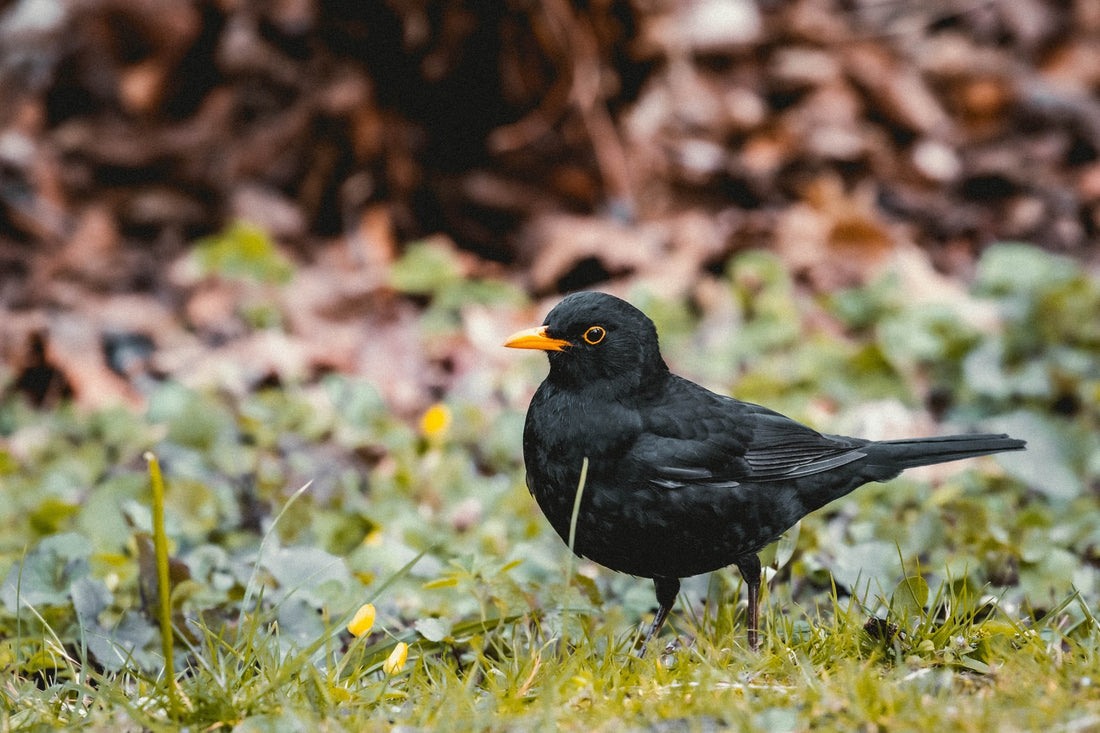While the male blackbird (Turdus merula) certainly lives up to Its name, females are brown. Adults males are instantly recognisable with their bright orange-yellow beaks and eye-rings. Blackbirds are comparatively large garden birds at 23cms in length and they have wingspans of 38cms. They are treasured for their melodious song and can often be heard singing after rainfall.
Male blackbirds establish their territories during their first year, and then hold these throughout their lives. Territories are established for mating and nesting, but food may be obtained from further afield. Blackbirds rarely stray very far from where they were hatched and are relatively short lived birds.
What is the blackbird’s distribution and population?
Blackbirds are found in gardens and the countryside from coastal areas to hills and throughout the UK. They are absent from the Scottish Highlands. The birds remain here all year round. The blackbird population went into decline between the 1970s and 1990s but there has since been a period of recovery. Surveys suggest that the blackbird population has increased 26 per cent since 1995 and is now stable.
British blackbirds are joined in the winter months by large numbers of migrants from Europe, mainly Scandinavia, the Baltic States, Russia and Germany.
What do blackbirds eat?
Earthworms are firm favourites with blackbirds which also feast on insects and berries. These birds are able to detect movement beneath the ground and so listen carefully for any activity. You may also see them flipping leaves on the floor to forage for insects and fallen berries.
If you would like to see more blackbirds in your garden, provide them with mealworms, suet fat balls and uncooked oats. Dog food is a good substitute for mealworms.
Where do blackbirds nest?
Blackbirds tend to produce two or three broods each year and may even try to produce a fourth. The breeding season is dictated by the weather conditions. Excessively dry weather in June can result in the starvation of late broods. Females build the nests low down and with cover. Trees and shrubs are the favoured sites, but blackbirds may also nest in buildings or on the ground. The nests are cups built from grass, straw and small twigs. The female bird’s line these with mud and fine material and may use them for more than one brood. Chicks are incubated for 13 – 14 days and fledge after 14 days.
Did you know?
A blackbird nesting near a house is considered to be a sign of good fortune.
One of the biggest threats to blackbirds is the lack of food availability, especially in dry weather. Leaving mealworms and ground feeder mix out on bird tables will help blackbirds to thrive.

